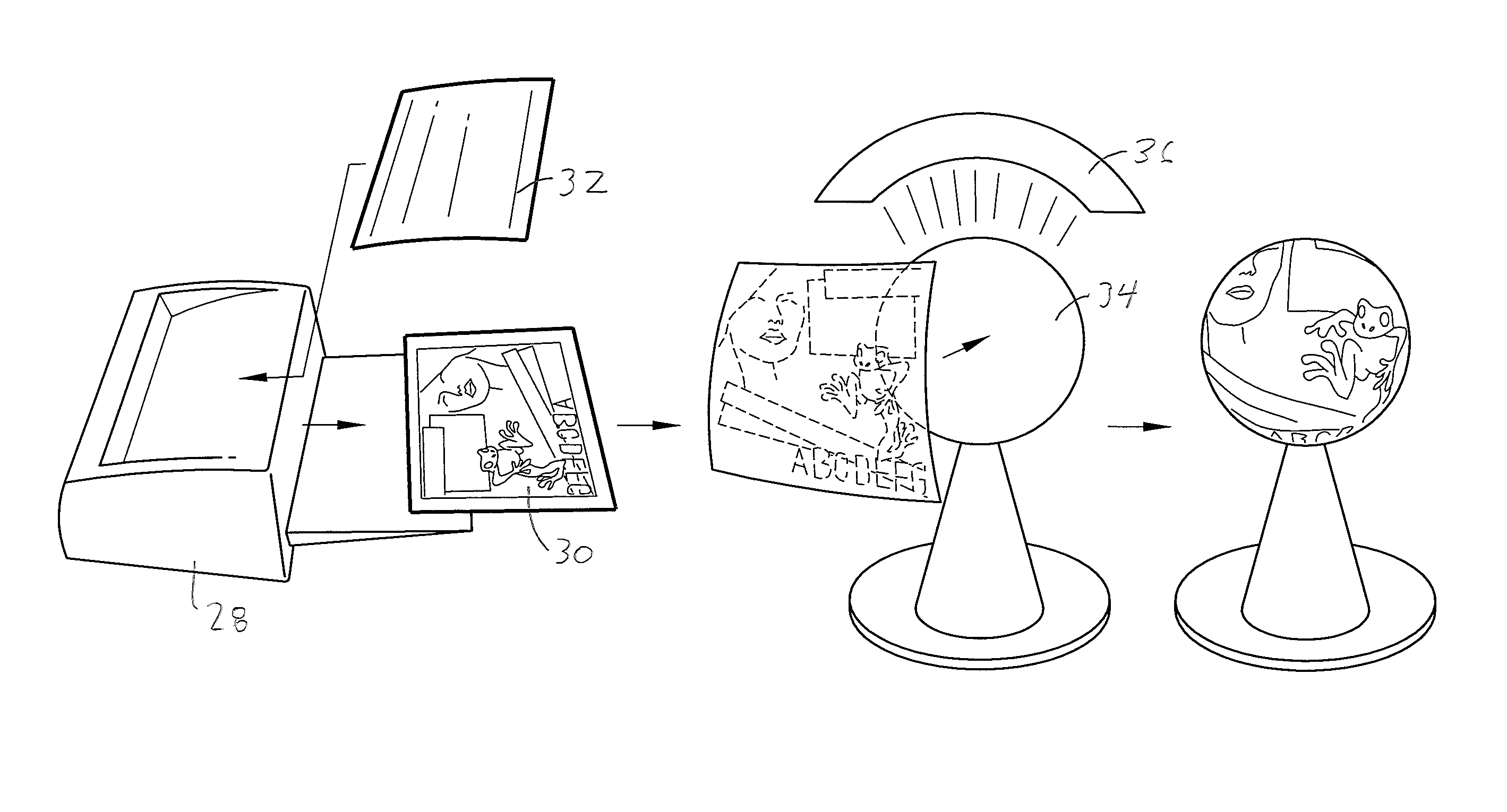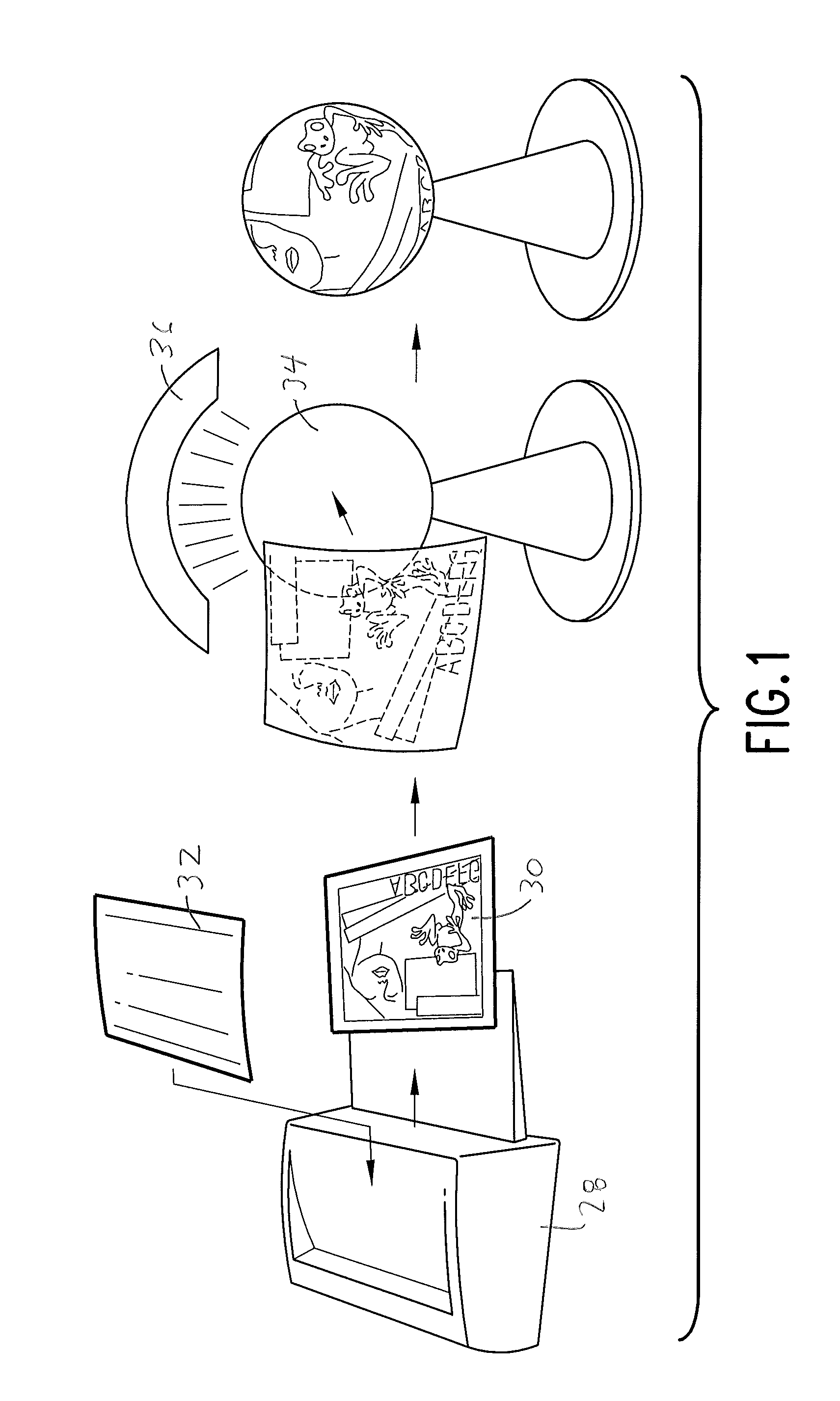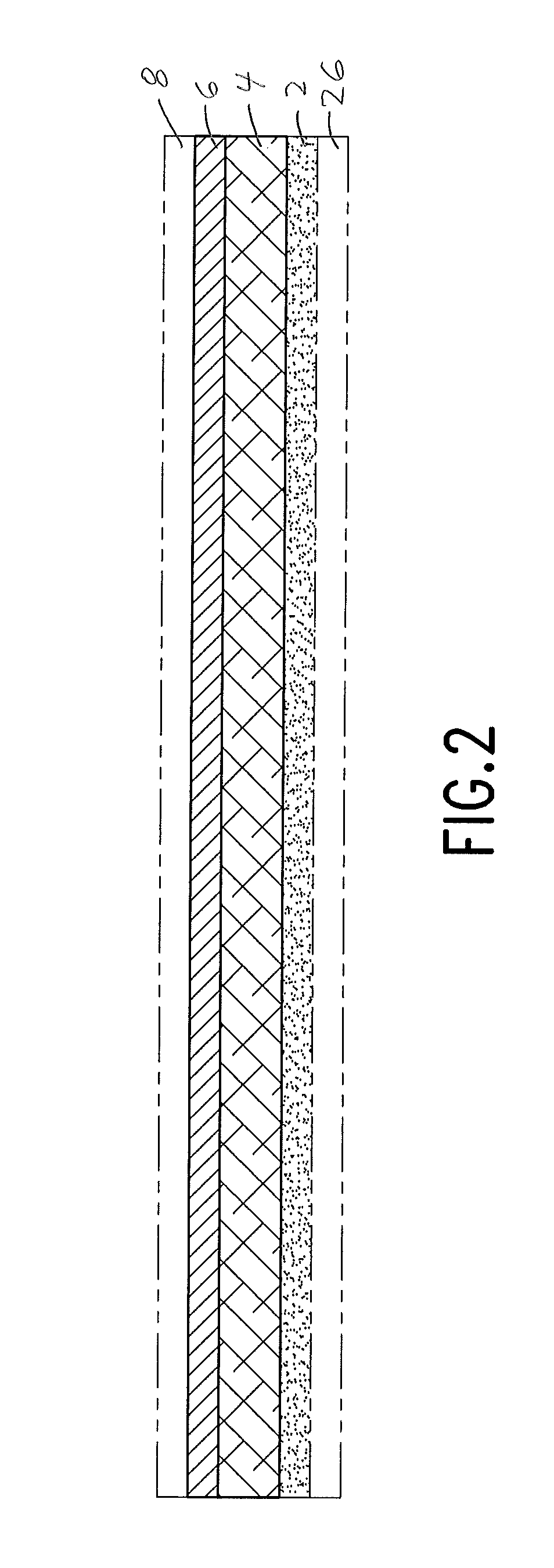Metalized receiver/transfer media for printing and transfer process
a technology of metalized receivers and transfer media, applied in printing, duplication/marking methods, instruments, etc., can solve the problems of affecting image quality, color intensity and image sharpness, and affecting image quality, so as to achieve excellent heat conductivity, reduce the effect of dye penetration
- Summary
- Abstract
- Description
- Claims
- Application Information
AI Technical Summary
Benefits of technology
Problems solved by technology
Method used
Image
Examples
example
Coating Composition of Image Receptive Layer
[0030]
Polyvinyl alcohol binder5-50%Liquid retaining compound50-95% Physical property modify additives0-25%liquid carrier (water)balance
[0031]An optional backing 26 may be used for supporting the substrate during the ink or toner printing / receiving step of the process. The backing may be applied with pressure sensitive adhesive, and removed prior to the image transfer step of the process.
[0032]An imaging transfer process may be carried out using a conventional mechanical flatbed press, as described in U.S. Pat. No. 5,431,501, or by other types of convection or radiation ovens, with or without a vacuum assist. The image printed by inks or toners comprising heat activated colorants such as sublimation dyes is kept in close contact with the transfer object, or final substrate, during the transfer process. After image transfer, the medium is removed from the object, leaving the object or final substrate imaged with a mirror image of the image t...
PUM
| Property | Measurement | Unit |
|---|---|---|
| thickness | aaaaa | aaaaa |
| thickness | aaaaa | aaaaa |
| diameter | aaaaa | aaaaa |
Abstract
Description
Claims
Application Information
 Login to View More
Login to View More - R&D
- Intellectual Property
- Life Sciences
- Materials
- Tech Scout
- Unparalleled Data Quality
- Higher Quality Content
- 60% Fewer Hallucinations
Browse by: Latest US Patents, China's latest patents, Technical Efficacy Thesaurus, Application Domain, Technology Topic, Popular Technical Reports.
© 2025 PatSnap. All rights reserved.Legal|Privacy policy|Modern Slavery Act Transparency Statement|Sitemap|About US| Contact US: help@patsnap.com



